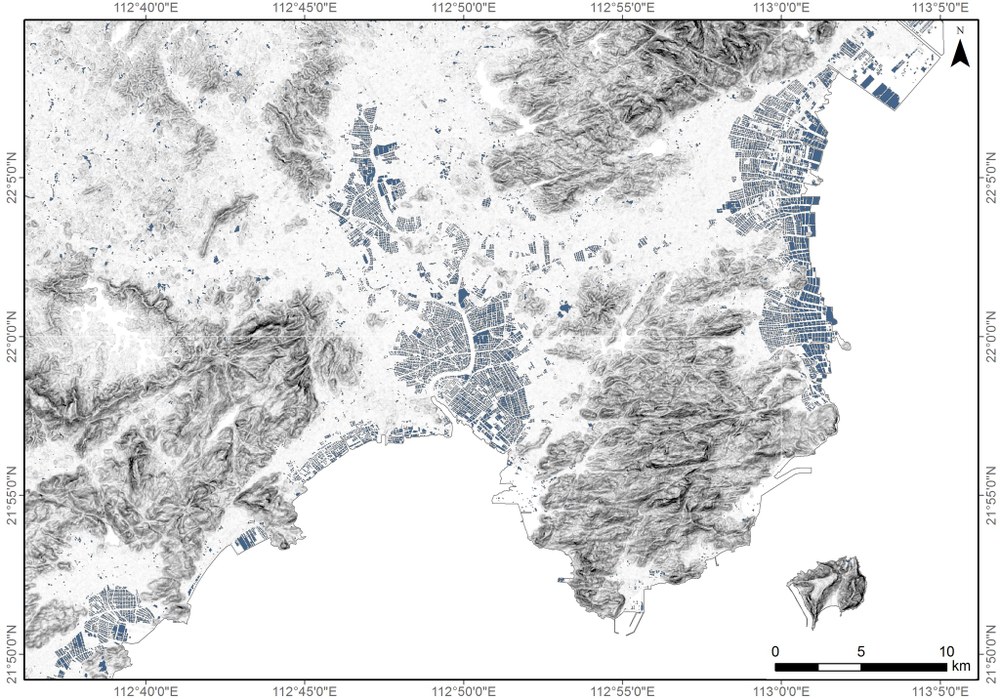Strong Growth in Aquaculture Threatens Ecosystems
Aquaculture is the fastest growing sector of the food industry worldwide and meanwhile supplies almost half of all fish that people consume. With methodology developed at EOC this growth can be detected over a wide area. On the Asia coasts the expansion of aquaculture leads to ecosystem destruction, the clearing of mangrove forests, and water pollution.
Aquaculture is the controlled breeding of aquatic organisms such as fish, shrimp and mussels. In contrast to wild-capture fishery, it usually takes place in water tanks onshore. Aquaculture today accounts for 45 percent of the total production of aquatic products. With an average annual growth rate of 6.7 percent, global aquaculture production has increased five-fold from 13 million tons in 1990 to 76 million tons in 2015. A growing world population and changed consumer behaviour have led to an increased demand for fish, mussels and shellfish, which provide essential fatty acids and proteins. Fish consumption has doubled on average since the 1960s and today amounts to 19 kg per person.

Asia supplies almost 90% of global aquaculture products and aquaculture is a fast growing economic factor there, promising high income. At the same time it is accompanied by high risks for the environment. These include the negative effects of clearing mangrove stands, water pollution, and stress on ecosystems from the use of antibiotics and pesticides. Fish and shrimp are predominantly bred in shallow coastal regions in tanks containing fresh or brackish water. Aquaculture tanks are usually rectangular tracts kept constantly under water during the growing phase. These tanks can be detected from space with methodology developed at EOC.

Use is made of data from the European Copernicus satellite mission Sentinel-1, which supplies high-resolution data showing aquaculture cultivation worldwide. In one study large areas at the Chinese and Vietnamese coasts were examined and brought to light the enormous areas required for fish and shrimp tanks. Changes in land use over wide areas and the loss and degradation of valuable wetlands are the result. Protecting coastal ecosystems and their resources is a global challenge caused by the intensification of the aquaculture sector. Considering the great potential of aquaculture to contribute to securing the global food supply, the EOC methodology can provide valuable information about its extent and yield.

